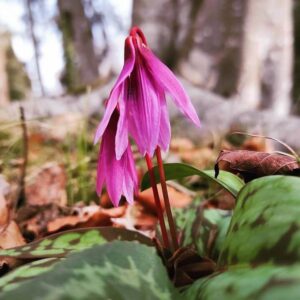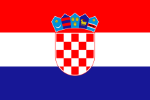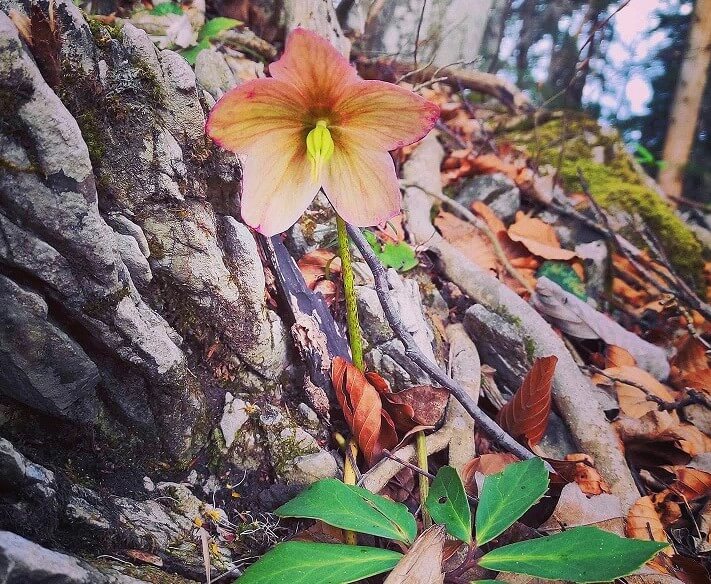How many times have you walked through the forest and encountered oddly shaped spring flowers with vibrant colors not knowing anything about them? We are here to correct that injustice.
We dedicate this week to spring flowers that are perhaps less well known. Together we will peek into their world and reveal their peculiarities to you. Because we want to see spring in you!
Let’s start with a poisonous plant with an interesting Latin name.
-
MEZEREON (Daphne mezereum)
Common names: Mezereon, Paradise plant, February Daphne
Latin name: from the Greek daphne = laurel + the word of Arabic origin mezereum = mortal (indicates the toxicity of the plant)

The name Daphne for the whole genus of plants was first recorded in the books of the famous Roman botanist Dioscorides. The leaves of these plants look like laurel, which is why they got its name. But there is also a whole myth behind this story. Daphne was the daughter of the river god Peneus whom Apollo fell in love with. He could not come to terms with the fact that she did not return his love. Being desperate, Daphne, asked her father to turn her into a creature so she could escape Apollo. So Penaeus turned her into a laurel. Apollo therefore made laurel a sacred plant. He used it to crown himself with it.
-
DOG’S TOOTH VIOLET (Erythronium dens-canis)
Common names: dog-tooth violet
Latin name: from the Latin word erythros = red + dens = tooth + canis = dog. The red colour indicates the spots on the leaves and the shape of the bulb resembles a dog’s tooth.

Mongolians and people in Siberia usually eat their cooked leaves while the bulb can be eaten raw or cooked. The Japanese use the bulbs as a source of starch for a special form of edible paste and cakes. This plant is strictly protected in Croatia and picking is prohibited.
-
CHRISTMAS ROSE (Helleborus niger ssp. macranthus)
Common names: Snowrose
Latin name: from the Greek words hellein = lethal, but also hellós = deer + bora = food. One definition is that it is translated as poisonous food and the other that is food for the deer.
This species is specific in many ways. It is a subspecies of the black cornflower which is odd as its flowers are white or pastel rose in colour. It is endemic, which means that it grows in a narrow area of distribution. You can find it only in mountain beech forests from Gorski kotar and Velebit through Žumberak and Samobor mountain range. As it blooms directly from the snow cover, one of its common names in is snowrose.
A workshop that will awaken spring in you
If you are a plant lovers that wants to find out more about spring plants that surrounds you, sign in on The Wisdom of Plants workshop.


